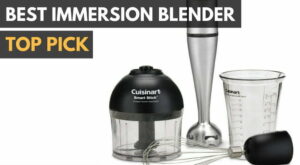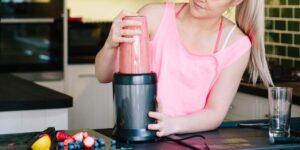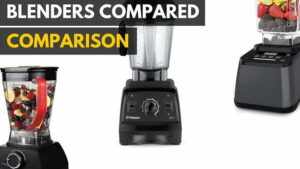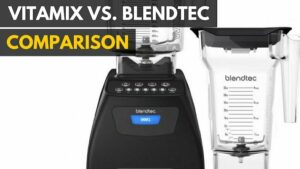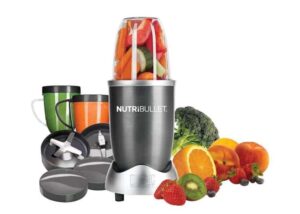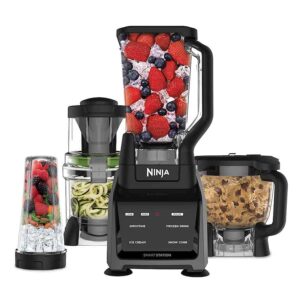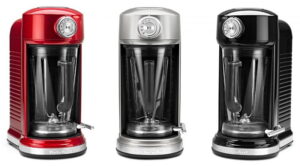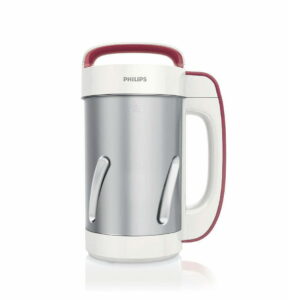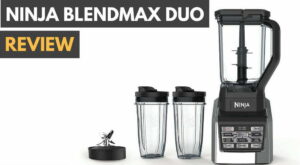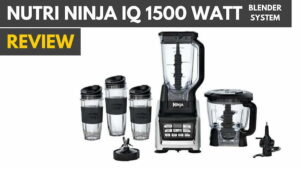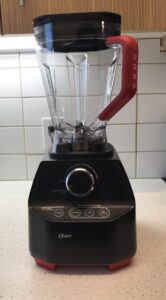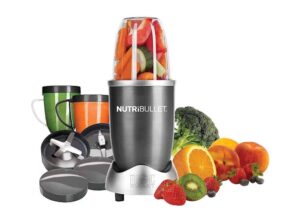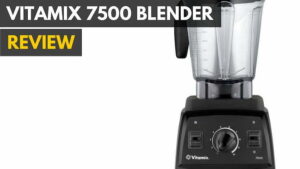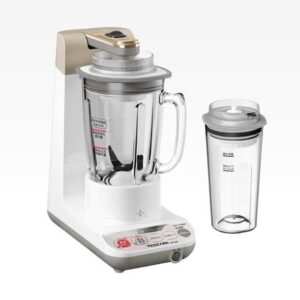Thanks to a YouTube channel called “Will it Blend”, millions are familiar with Blendtec’s offering: an ultra powerful blender that will chomp just about anything to shreds, including iPhones and wood planks. But few have used one, largely because of their seemingly high price tag that exceeds $300. Yes, $300 for a Blender. Now, admittedly it’s a far cry from affordable, best blenders out there but then it is a very durable and versatile blender that will work awesomely at home or in a commercial setting. Although you may need to learn some common mistakes to avoid while buying a new blender, we have everything for you in detail.
So at this point I’m sure you’re thinking “how is a $300 blender better than a $50 one”. It’s not an easy argument to make it. And it only gets tougher when you factor in the model of Blendtec I’m talking about today: the Designer 725. The stainless steel version, the version I’ve been testing, costs $650. Pricey indeed. If you wish to try a different blender, check this Blendtec Classic 575 Blender review.
But before we get caught up in value, let’s look at what the Designer 725 is all about. First off, it’s finished in stainless steal. So, needless to say, it will fit in nicely in just about any kitchen of any caliber. Much like Blendtec’s blenders of a time past, the top face of the blender base is outfitted with 6 preprogrammed buttons. However, the 725 boasts capacitive buttons, which is an upgrade for me from an older Blendtec which has the soft touch type. It’s not the most remarkable feature, but the point is that they’re presumably less likely to wear out from excessive pushing, are easy to see in low light (they glow), and can easily be wiped clean. Moreover, they work well with no delay in function. Touch, and the blender instantly turns on. There is also a 100-speed touch slider. Now this, to me, is the holy grail of blender features. Why? Because it makes blending very intuitive. Simply sliding my finger from left to right increases the Blendtec 725’s speed and does so in just the right increments that it makes it virtually impossible to over blend. For example, after making a smoothie I sometimes like to add protein powder. With any other blender it would be difficult to simply mix it in without all the froth and all while fully blending it. Not so with the Designer 725. However, I have yet to find a way to pulse effectively. I’m an idiot. To pulse you simply touch the “pulse” button, then tap on the slider. If you are looking for a blender that has almost all these features, read the Blendtec Designer 725 review roundup
As mentioned there are 6 preprogrammed buttons. These include: Smoothie, Salsa, Ice Cream, Whole Juice, Hot Soup, and Clean. They’re fairly straight forward in terms of designation. In theory, you could hit anyone of them and the results would be a blended something. But each one is designed to address the type of ingredients that are placed into the blender, and thus the Designer 725 varies its speed and frequency to achieve the best mix. Now, that in mind, you’ll need to load the Blendtec 725 correctly to maximize your results. Blendtec recommends adding liquid, soft ingredients, and then finally hard ones, such as frozen strawberries. It’s fairly logical, but to be fair, and based on my experience, you can add the liquid last provided there is some space for it to flow to the bottom.
Now, to be candid, my experience has largely been using the Whole Juice option. I add spinach, coconut milk, some sweet juice, ginger, strawberries and maybe a banana. Lid on and sealed – make sure it’s sealed otherwise liquid might leak out – hit the Whole Juice option, and within 50 seconds the Designer 725 produces a juice that is both full in fiber and smooth in consistency. Next up: making soup. Yes, that’s right, you can make soup with the Blendtec. And yes, it will come out hot. Well, sort of hot; 110 degrees F at best, at least according to Blendtec. Not exactly piping, but probably a good thing when you consider the safety implications. And because of that, Blendtec recommends you use warm water when making soup. So how does it get so hot? Spinning. The Blendtec Designer 725 (and their other blenders) can spin so fast it can heat the liquid up all without a flame, gas or an oven. This is thanks to a motor that can achieve 3.8 peak horsepower. Pretty impressive, especially when considering my childhood GoKart had a max horsepower of 5. *Note: You’ll want to heat the soup up to achieve a more palatable temperature, otherwise it’s just tepid at best.
That being said, there is a caveat to that comes with that kind of power. No! Not great responsibility Spider Man. It’s loud. Like, really loud. So loud, I can’t help but wonder if it’s ear damaging after continued daily use. Using an iPhone App called dBMeterPro, the Designer 725’s loudness peaked at 95db. That, according to NIDCD, is equivalent to that of a motorcycle and is in the “red zone” if one were to be exposed for a prolonged period of time. Fortunately, the cycles generally run no more than 30-50 seconds, so in theory one should be fine.
So how does it work? Unlike traditional blenders, Blendtec’s blender’s use a dull blade. So there is no chance to cut yourself during cleaning. Moreover, the jar, which mind you is square and not round to help drive food back to the blade, is sealed together, into one, with the blade. So there is never a need to unscrew and clean the parts separately. It’s recommended that you don’t let water sit in the base of the jar for long periods of time and that if placed in the dish washer that you turn off the heated dry. I’ve had no problems in either instance, but I suppose over time these could cause issue.
There is no doubt that the Blendtec pulverize anything you put in its path. The preprogrammed buttons make it a cinch to blend up the next drink or food item. For some added scratch ($120) you can pick up an additional jar (called the Twister jar) which is designed to be used when making your “thickest recipes”, such as nut butters, humus, baby food, and so forth. But I’d suggest starting with their included one first, as it seems to be fairly applicable in most instances. The engine noise does solicity a bit of cause for concern. But since each use is generally less than 60 second, no long term damage will occur. Just don’t expect to have a conversation while it is running.
All together I’m impressed. And while I’ll never go online to redeem the rewards that the blender shows (odd, I know) on the screen, I have been using it almost daily to make a green beverage in the morning. And not for nothing, my health, while invaluable, seems to be the biggest return on money in this particular instance so I will count this as one of the best blender in market.
Related Articles:
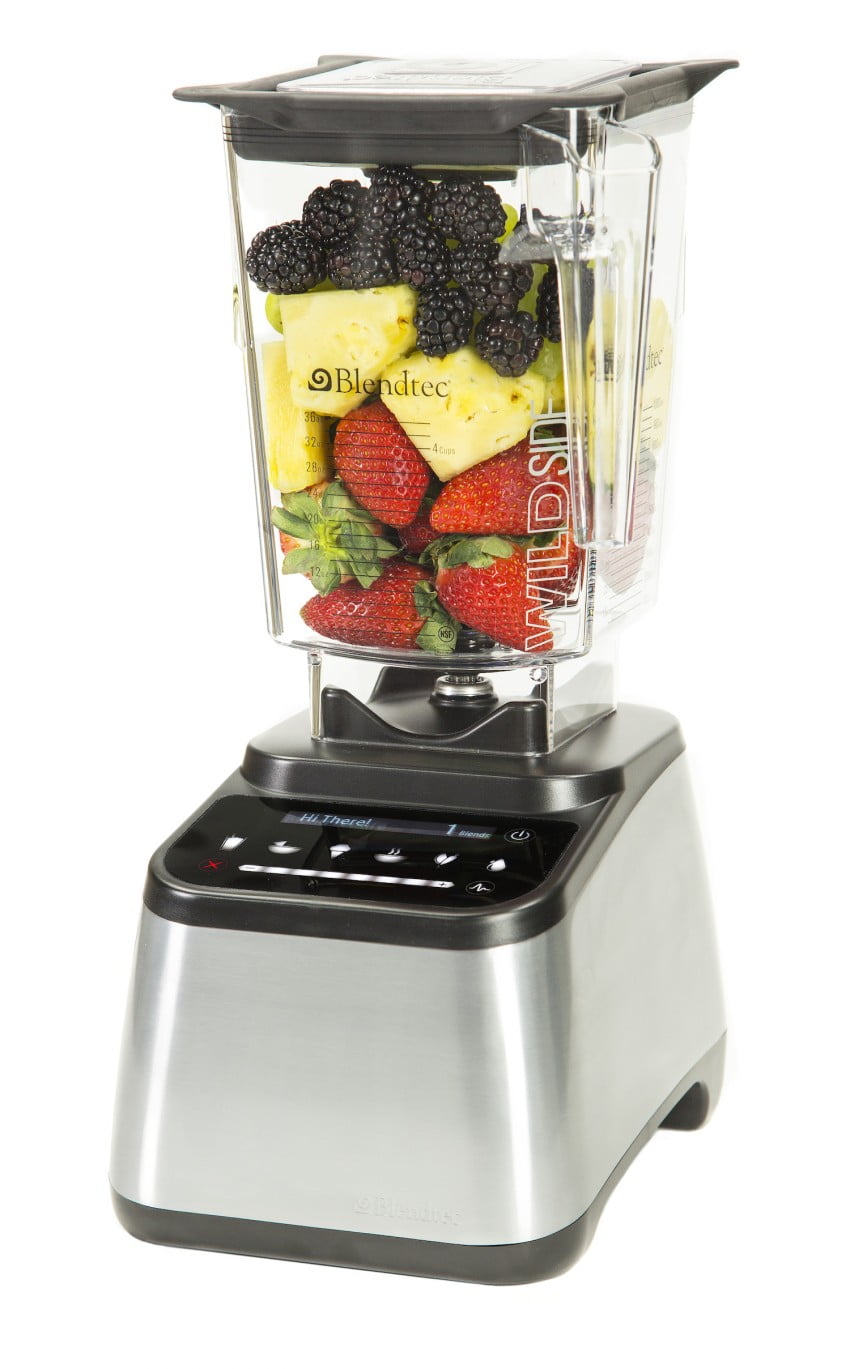
![10 Best Blenders for Smoothies in [year] 1 Best Blender for Smoothies](https://www.gadgetreview.dev/wp-content/uploads/Best-Blender-for-Smoothies-300x139.jpg)
![10 Best Blenders to Puree Food in [year] 2 Best Blender to Puree Food](https://www.gadgetreview.dev/wp-content/uploads/Best-Blender-to-Puree-Food-300x200.png)
![10 Best Countertop Blenders in [year] 3 Best Countertop Blender](https://www.gadgetreview.dev/wp-content/uploads/Best-Countertop-Blender-300x169.jpg)
![10 Best Portable Blenders for Travel in [year] 4 Best Portable Blender for Travel](https://www.gadgetreview.dev/wp-content/uploads/best-portable-blender-for-travel-300x169.png)
![10 Best Vacuum Blenders in [year] 5 Best Vacuum Blender](https://www.gadgetreview.dev/wp-content/uploads/best-vacuum-blender-300x225.jpg)
![Best Blender Food Processors in [year] 6 Best Blender Food Processor](https://www.gadgetreview.dev/wp-content/uploads/best-blender-food-processor-300x169.jpg)
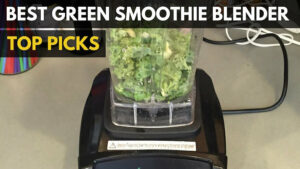
![Best Blenders for Crushing Ice in [year] 8 The top rated blenders that destroy ice.|Ninja Ultima blender ice|Cleanblend|Blendtec Total Blender ice](https://www.gadgetreview.dev/wp-content/uploads/best-blender-for-crushing-ice-300x169.jpg)
![Best Commercial Blenders in [year] 9 Best Commercial Blenders in [year]](https://www.gadgetreview.dev/wp-content/uploads/best-commercial-blender-300x200.jpg)
